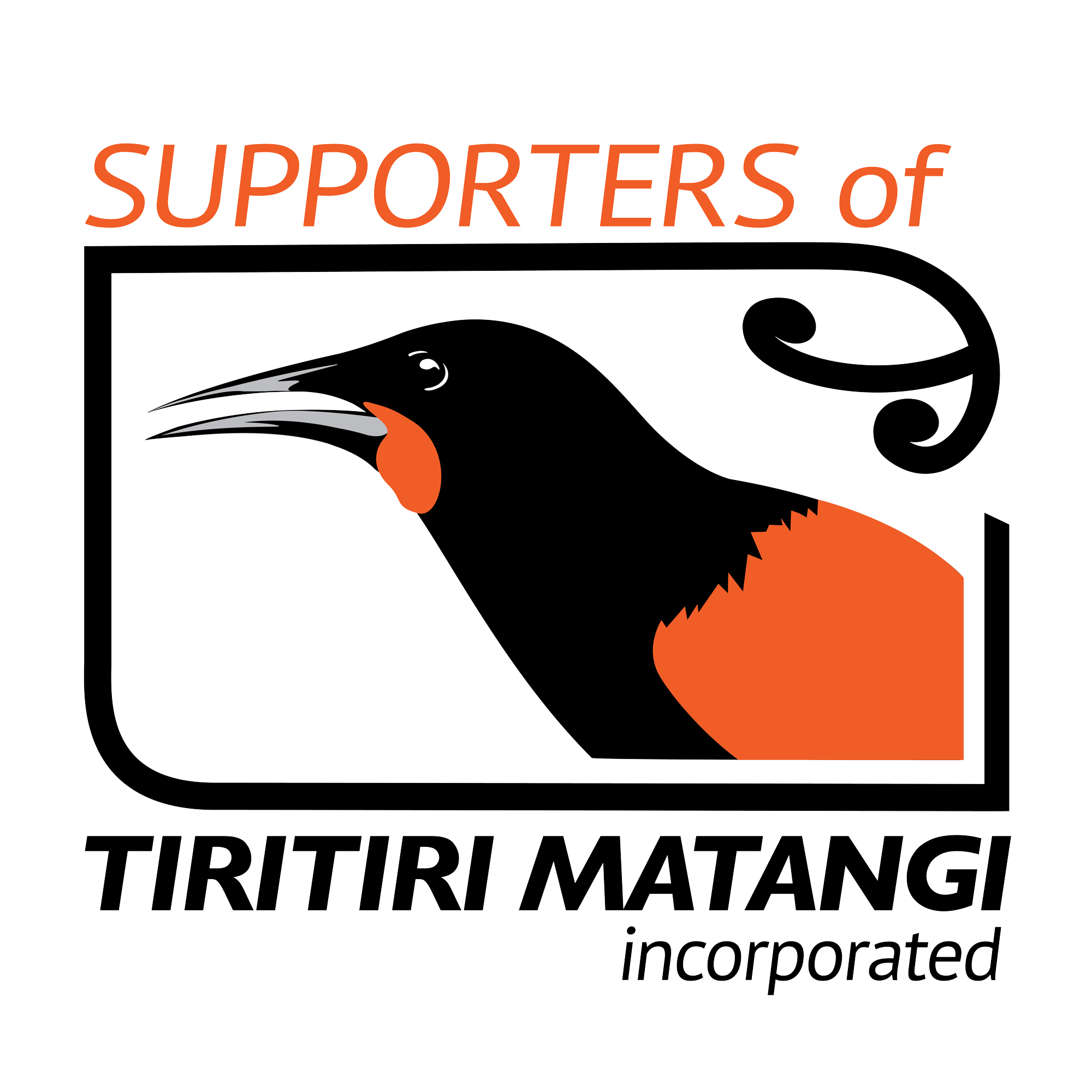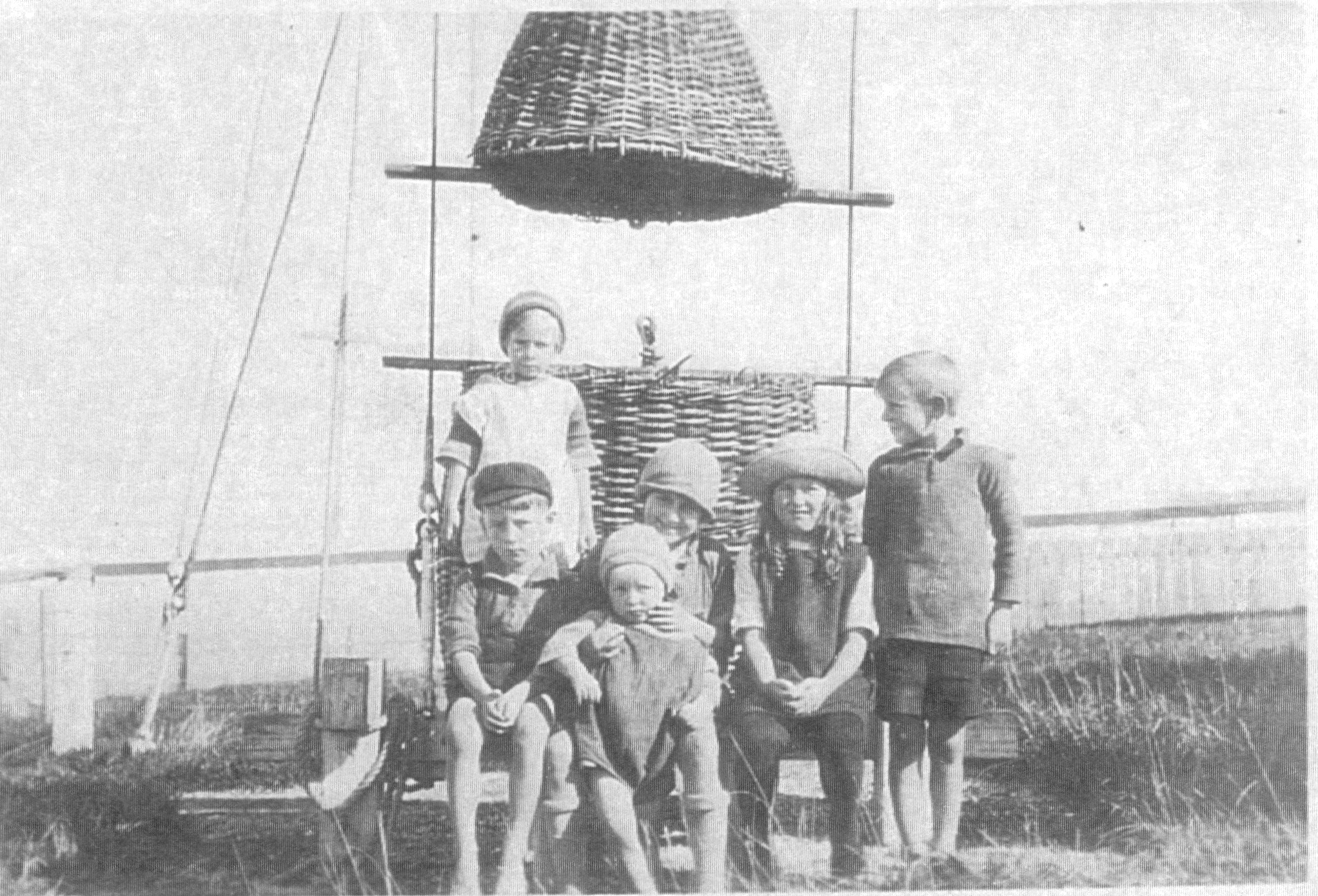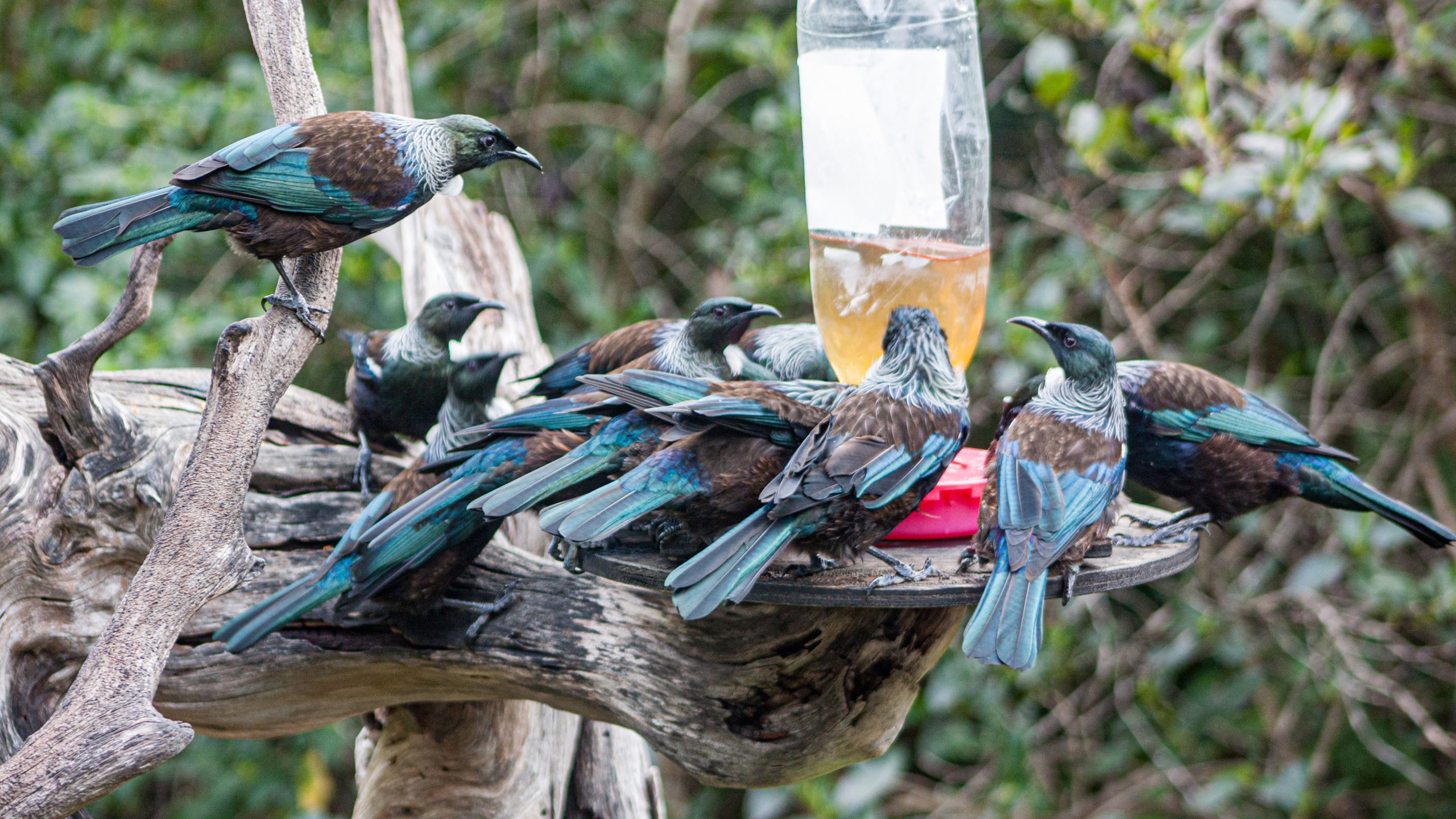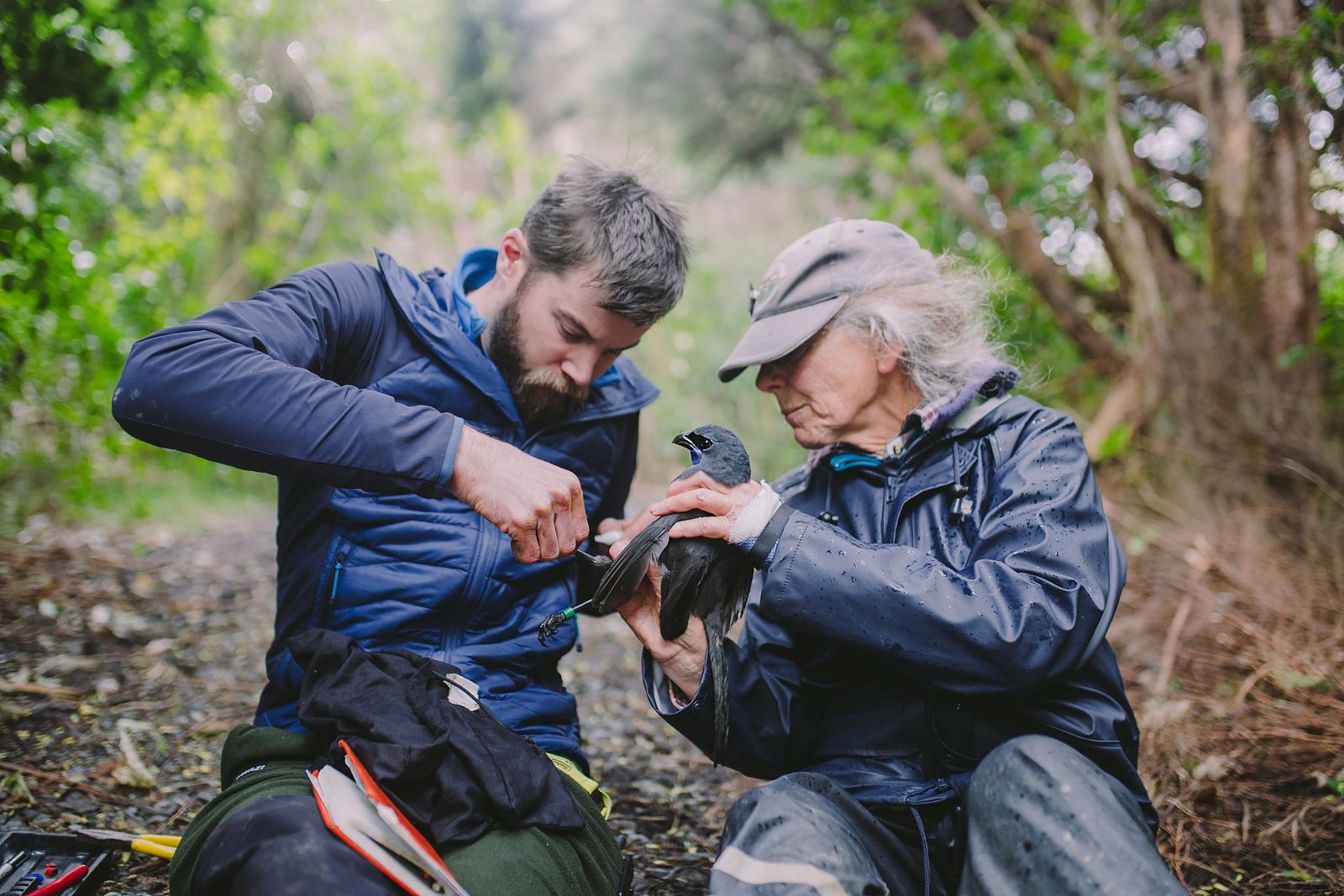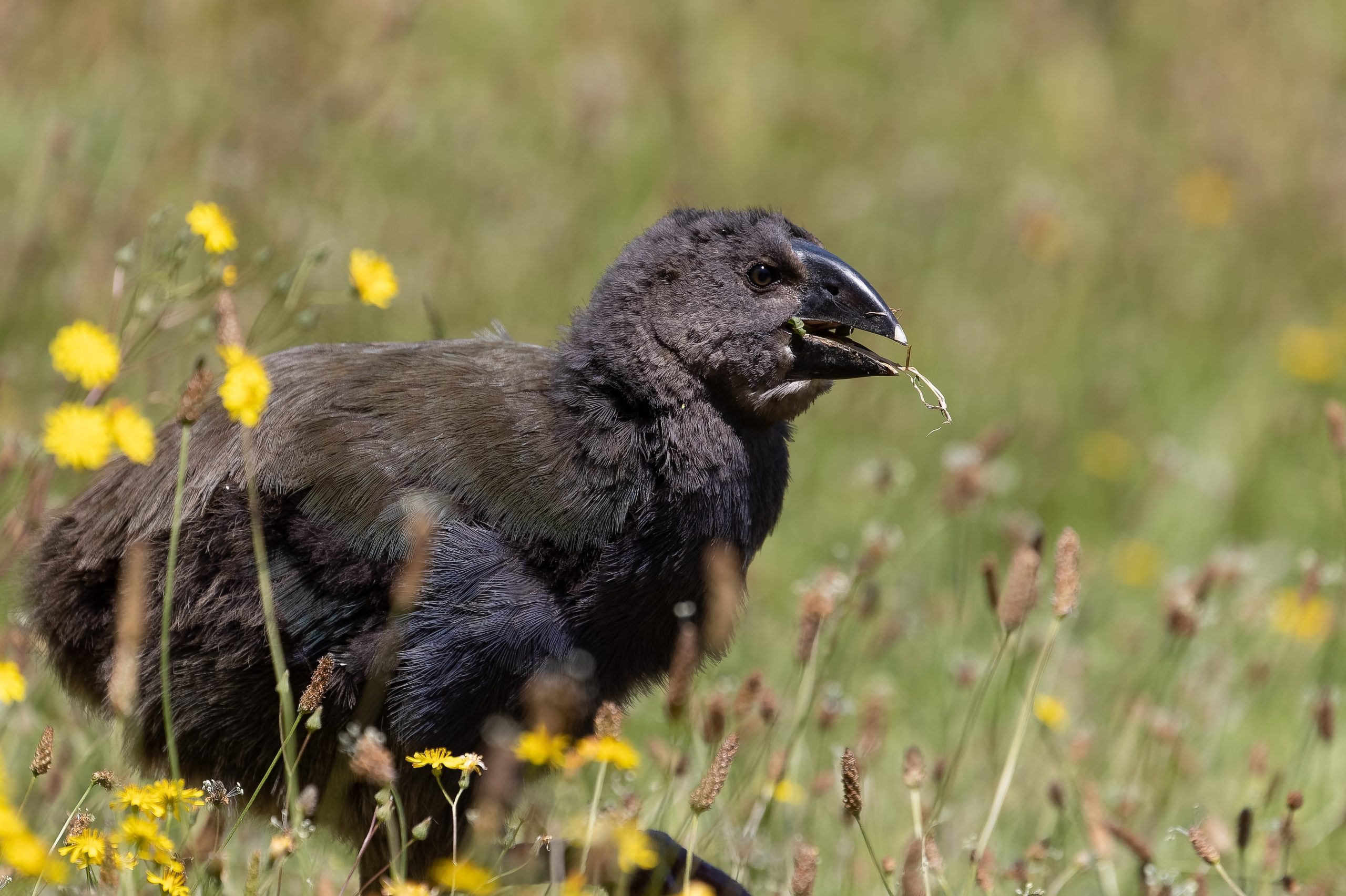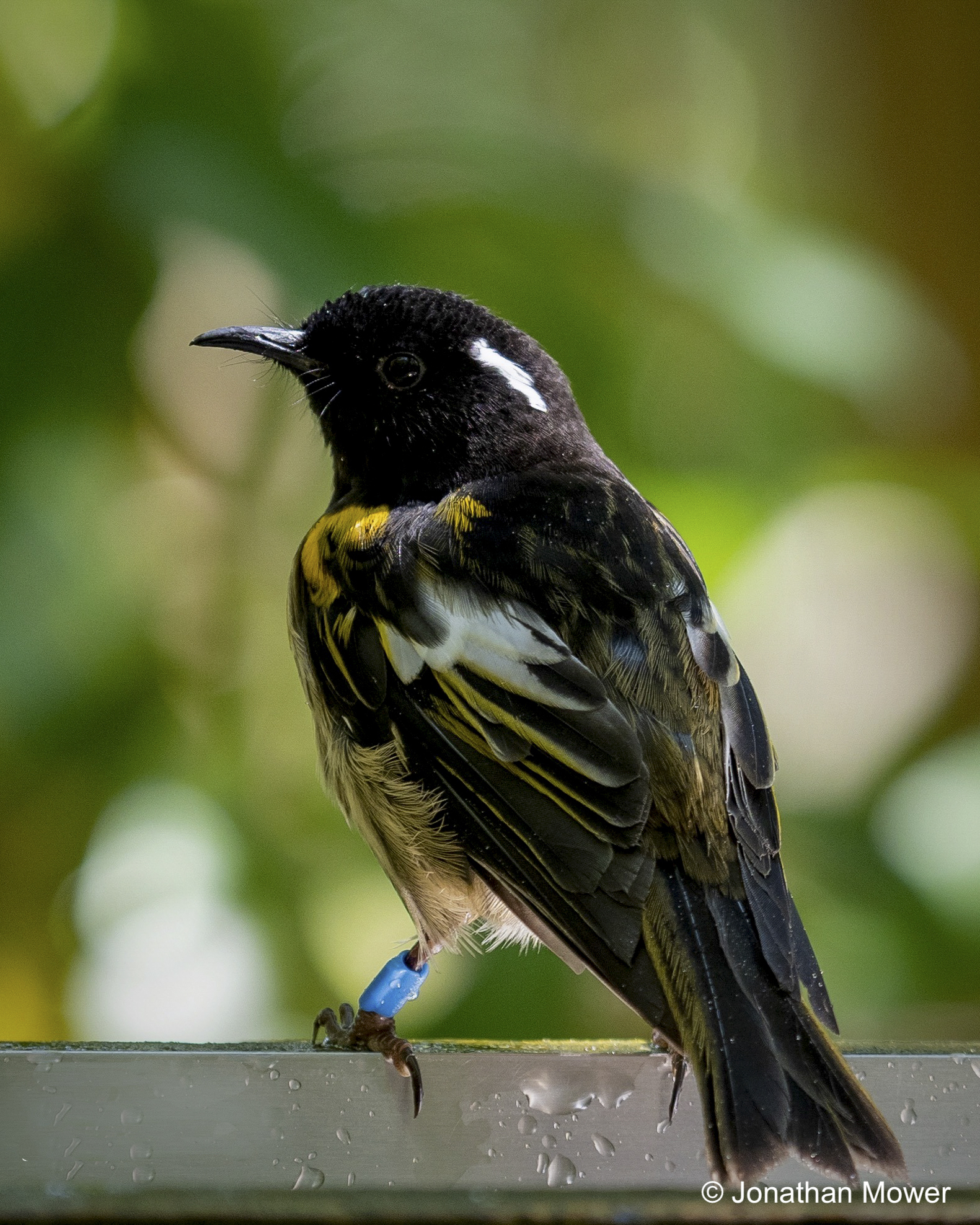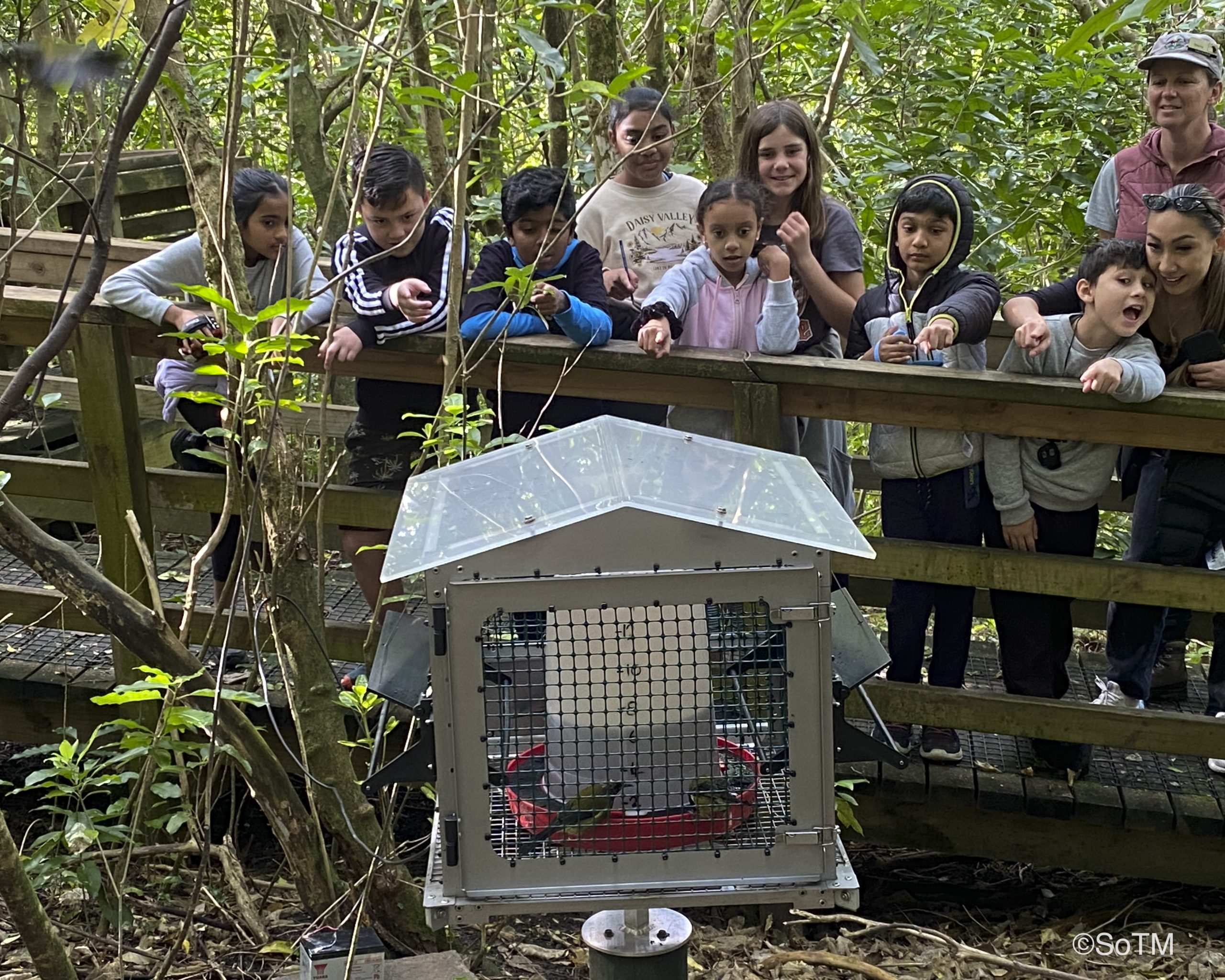If only we could re-live those days
If only we could re-live those daysAuthor: Mrs Dora Walthew (nee King)From the Supporters of Tiritiri Matangi archives. We think it was written in the 1980sIt was the year 1934 and the island sat like a bright green jewel, in the blue waters of the Hauraki Gulf – approximately 16 miles from the port of Auckland, which nestles beyond the massive bulk of Rangitoto, guardian of the harbour entrance. The island was fringed with the bright red blooms of the pohutukawa trees, growing from the cliffs edges and along the rock foreshore. On the highest point of the island, stood the lighthouse. A 60 foot construction of steel sections, bolted together with a strong beaming light which flashed warnings to the shipping, entering either of the two passages to Auckland. Two keepers’ homes were built on the flatter sides of the hill and another house of superior construction was built further over, close to the cliff edge. (Where the bach is today). This was the home of the head keeper. Large concrete tanks were constructed alongside each home, for the island dwellers depended on every drop of rain that fell for their water supply. With various sized implement and storage sheds and a stable to keep chaff and oats for the station horse, there was quiet a community of housing. A large red gate connected to a seven wire fenceline, running the width of the…
How to attract native birds to your garden
How to attract native birds to your gardenAuthor: Toni AshtonDate: July 2023Photo credit: Andrea TrittonIts been wet, windy and chilly on Tiritiri Matangi lately and so the nectar-feeding birds – i.e. tūī, hihi/ stitchbirds and korimako/ bellbirds – have been busy at the feeding stations, providing great entertainment for visitors. Providing food is just one way of attracting native birds to your garden. You can also plant native trees and shrubs. And providing patches of leaf litter or mulch will help to attract insect-eating birds such as the pīwakawaka/ fantail and tauhou/ silvereye. In summer, a shallow bird bath provides water for drinking as well as a nice cool bath for the birds. And of course the birds need to feel safe and so trapping predators such as rats and mice, and keeping cats away from your garden will also help to attract the birds. The websites of the Department of Conservation and Forest and Bird provide excellent information about which birds eat what, which trees and shrubs to plant, how to keep the birds safe and many other useful tips. Attract birds to your garden Visit How to feed native birds in your garden Visit To find a local predator…
Kōkako Banding on Tiritiri Matangi
Kōkako Banding on Tiritiri MatangiAuthor: John StewartDate: 30/06/23Photo Credit: John SibleyThe kōkako population on the island has been closely monitored since the first birds were brought here in 1997. Ten years later, the island received the captive-bred descendants of the last wild birds living in Taranaki. It was hoped that they would survive and breed on Tiritiri and eventually their descendants would be returned to their ancestral home. The birds were banded so that it would be possible to record their family trees and keep track of their relationships. That hope was fulfilled in 2017 and 2018 when birds were returned to Parininihi and Pirongia.
We have built on that initial work, continuing to band and to record details of the individual birds and their lives on the island resulting in a unique long-term data set which we hope will be used to better understand and to protect and sustain them.
Trained banders give each bird a unique combination of one numbered metal band and up to three plastic colour bands allowing observers to recognise each individual. Most of the birds are banded as chicks before they leave their nest.
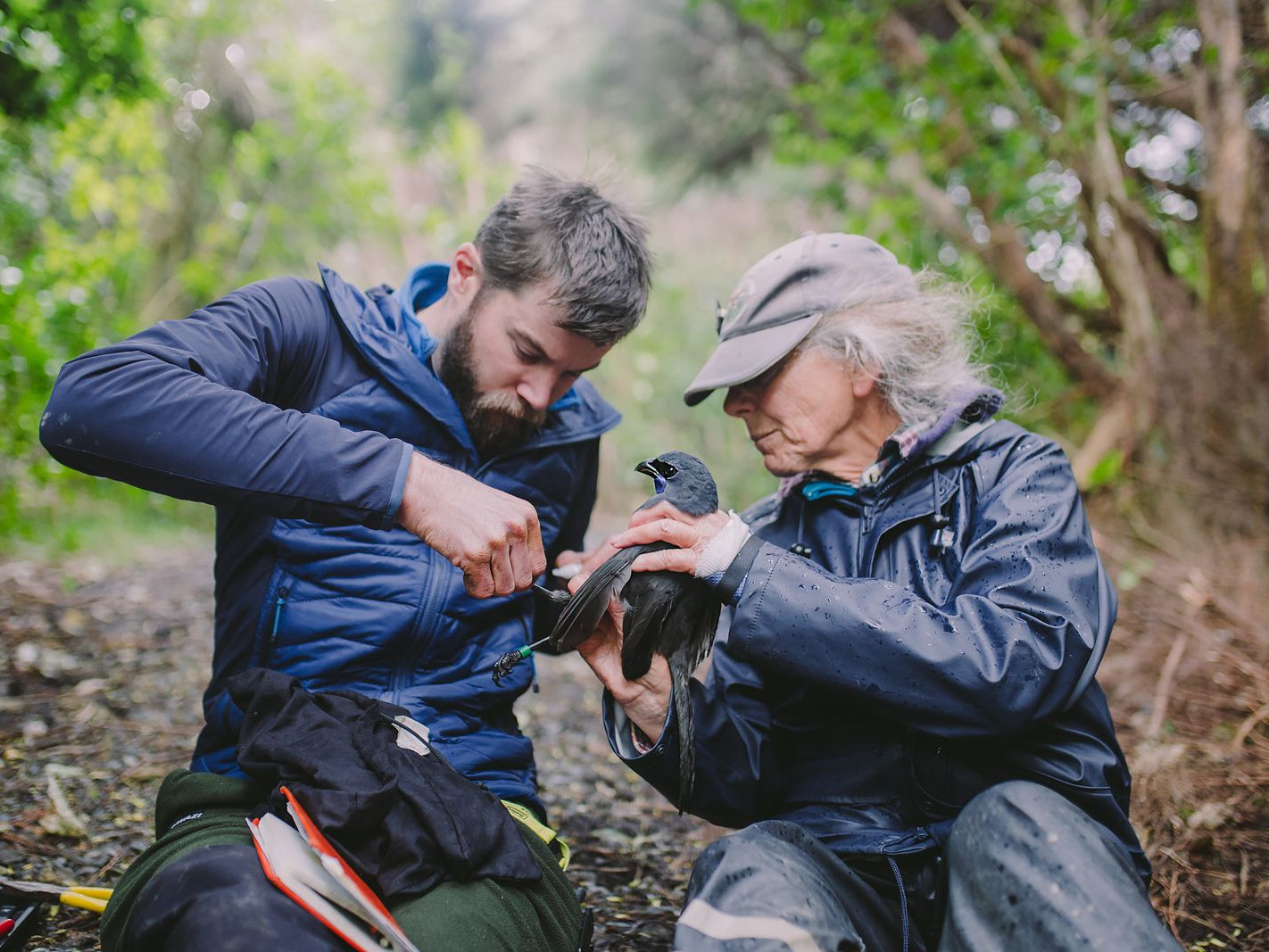
Sharing the love: where are the takahē now?
Sharing the love: where are the takahē now?Author: Phil Marsh, the takahē sanctuary sites ranger with the Department of ConservationDate: June 2023Heading photo credit: Malcolm de RaatThis certainly isn’t an exhaustive list but it highlights the contribution that takahē from Tiritiri Matangi continues to have on the programme to increase the population throughout the motu. It also demonstrates the fluidity of the takahē programme. 2009 – Apiata was removed off Tiritiri Matangi and transitioned to the Murchison Mountains. He is still alive there to this day and has produced juveniles with his partner, though the number is unknown. He is a great example of how well takahē from sanctuary sites can transition, provided they receive the necessary training at Burwood Takahē Centre prior to being released in the wild. I’ve seen him in the Murchison Mountains around six times since being involved in the programme and I have a real soft spot for him. 2010 – Wal was moved to Burwood as a breeder from 2012-2021 and raised a number of juveniles (four juveniles in 2018-2020 alone). He was shifted to a privately-owned sanctuary in the South Island in 2021 where he is paired with a new partner to this day. 2013 – After leaving Tiritiri Matangi, Pukekohe spent time at Tāwharanui Regional Park where he was part of a breeding group, although…
Children energised by the wonders of the New Zealand bush
Children energised by the wonders of the New Zealand bushAuthor: Jean GoldschmidtDate: 18/05/23Winter clothes today; boots, long trousers and the raincoat at hand for the dank, dark miserable day. White horses whipping up the waves found the ferry rolling sideways and passengers glued to their seats. Sitting indoors for a change, I smiled and added comments to the conversation between guides but my mind was on the children we would be guiding today. Was I over it? Did I really want another dose of young children? Already in their groups the children came off the boat and lined up on the concrete in a manner which showed thorough preparation – so a good start. Away as group four, I marched up the path with eight ten-year-sold and the teacher behind me. She explained the children were in three groups, birds, environment and she took the māori component but she felt she still had a lot to learn. With full participation, they quickly found all the berry colours on the tawapau. After the constant rain, all heard the gurgling water rising up the māhoe. Everyone found a perfect skeleton leaf which they matched with a green living leaf. At the edge of the bush, the pōpokotea/ whiteheads flitted back and forth over our heads until one briefly landed on the track in front of us. These special little birds with heads dipped in white paint move in families and…
Ancient Tiritiri Matangi: Adventures in "Deep Time". The Fungi
Ancient Tiritiri Matangi: Adventures in "Deep Time". The FungiAuthor: John SibleyDate: 16/06/23We have been travelling through “Deep Time” from the dawn of Earth’s history when living things first appeared, some 4,000,000,000 years ago (4,000Mya or 4Ga). It is thought the Fungi evolved about 410Mya just before the land was colonised by plants. Today they form one of the most diverse kingdoms with varied ecologies, lifestyle strategies and morphologies (outward shapes). Their members include single-celled yeasts, filamentous fuzzy moulds and familiar mushrooms. Although once classified with the plants, they share more features (including genetics) with the Animal Kingdom. Part of our fascination with fungi is that they have a secret “hidden life” in the earth beneath our feet, emerging above ground only to disperse their spores into the air – popping up overnight as a wonderful variety of “fruiting’ bodies. Some of these “mushrooms’ are very poisonous to humans while others are delicious to eat! Yet other fungi raise our bread, brew our beer, flavour our soy sauce and cheese, and cure our ills (antibiotics and statins etc.) It is estimated that this hidden fungal horde with their vast subterranean network of feeding threads at least equals and perhaps exceeds the biomass of the more visible Plant…
A tech upgrade
A tech upgradeAuthor: Stacey BalichThis text has been collated using the Hihi Conservation 2022 - Annual ReportDate: 16/07/23The Hihi Conservation 2022 Annual Report shares that for nearly the past three decades it has been a rite of passage for every hihi hatched in a nest box to receive a set of colour bands when they turn 21 days old. On one leg, they have two colours; on the other, they have one colour and one metal band. This allows researchers to individually identify the birds which supports monitoring, management and research. Dr John Ewan shares in his report that on Tiritiri Matangi all female hihi nest in nest boxes, so every bird in the population can be banded before fledging. This means family relationships are known for every hihi on the island. Observing and locating individual birds requires enormous manpower and data can sometimes be limited by the size of the field team and environmental conditions. This can sometimes result in incomplete band reading or misidentification. In 2015, the Hihi Recovery Group began exploring how to modernise hihi monitoring. They selected a technology called Radio Frequency Identification (RFID). RFID involves attaching a tiny computer chip storing a unique identification number to an animal. Special RFID ‘readers’ are then placed in key locations throughout the environment to ‘read’…
One of the most interesting trips I have ever had in my life
One of the most interesting trips I have ever had in my lifeAuthor: Gabrielle Yan (Year 5/6), Summerland SchoolDate: 15/06/23Tiritiri Matangi was one of the most interesting trips I have ever had in my life. The ferry ride was great, amazingly clean to say the least. The first bird we saw was a bellbird, which had the voice of our school bell, which was very familiar as we have been hearing it for years. Along the way we saw many fantails and bellbirds, so many that they didn’t seem all that rare anymore. We heard a tūī singing near the feeding area, which had been surrounded by all sorts of birds. On the ground lay lots of skeleton leaves which were pretty much transparent with skeletons that looked very much like fibre. Our guide, Bob, showed us a tracking tunnel with laminated pictures of predators’ footprints. While we were taking a rest on a wooden bench, we spotted the biggest New Zealand pigeon ever, perched on top of a very large Nikau. On the way to the lighthouse, we made a wish while touching NZ’s oldest rock (80 million years old) and looking at the youngest (Rangitoto). Right before leaving the forest, we had a finger puppet hunt. The finger puppets were in the shape of native birds and other creatures, which was the most adorable thing ever. After we left the forest, we saw around 3 takahē, which was chasing after the…
Tiritiri Matangi Island On Active Service
Tiritiri Matangi Island On Active ServiceAuthor: Stacey BalichThis text has been collated using Tiritiri Matangi, A Model of Conservation by Anne RimmerDate: 13/06/23During the Second World War (1939-45) the island was part of the Auckland Harbour defences. The day after war broke out, 12 Royal Naval Volunteer Reserve signalmen landed on Tiritiri Matangi to identify all approaching vessels. The Navy duplicated much of the Auckland Harbour work of identification. At first, the two services shared the Auckland Harbour Board facilities but it soon became apparent that the Navy needed its own building. The military then built the Port War Signal Station, near the lighthouse, linked to gun emplacements on Whangaparaoa, Rangitoto, North Head and Waiheke Island. The Port War Signal Station had a view from Kawau Island past Aotea Great Barrier and the Coromandel to Auckland but, significantly, the Tiri channel was obscured. Ships at sea were forbidden to use their wireless in wartime, so communication with them was by flags, semaphores or Aldis signal lamps. After the bombing of Pearl Harbour (7 December 1941), the US poured money into New Zealand’s defences and the Army established a Fortress Observation Post on Tiritiri Matangi. The Army rebuilt the Fourth House, concreting the outside and adding a concrete tower. The Fortress Observation Post gave…
King's Birthday Working Weekend
King's Birthday Working WeekendAuthor: Karin GouldstoneDate: 08/06/23On Saturday 3rd June a keen team of 16 volunteers boarded the Explore Ferry to make their way across the sea to Tiritiri Matangi. After settling into the bunkhouse, some bird watching, lunch and a health and safety briefing Talia, the Department of Conservation Ranger set up the working groups. Armed with shovels, shears, secateurs, hedge trimmers and wheelbarrows we tackled the long overdue maintenance on the upper Wattle Track. After a couple of hours with the odd interruption of kōkako, toutouwai/ robin and other wildlife we had a yummy shared dinner. We continued where we left off on the following day and we made amazing progress. In the evening some went exploring or put their feet up. Others went for a night walk and found tuatara, kororā/ little penguin, kiwi pukupuku/ little spotted kiwi, pāteke/ brown teal and wētā punga. Monday was our last day and was spent packing, cleaning and finishing off some jobs before another stroll around the special island. Thank you to Paul, who set up a yoga session in the Visitors Centre. Supporters Working Weekends The Department of Conservation and the Supporters of Tiritiri Matangi greatly appreciate your participation in our General Maintenance Volunteer program. The work of volunteers is an integral part of the island’s success as one…
